一、导读
近年来,超材料在太赫兹柔性功能器件的应用方面展现出巨大的潜力,但弯曲变形往往会改变谐振单元的结构,从而影响超材料的电磁响应和稳定性。
近日,福建省太赫兹功能器件与智能传感重点实验室在国际知名光学期刊《Photonics Research》(中科院1区TOP,IF:6.6)发表了题为“Freestanding metamaterial with constant coupling response for terahertz flexible functional devices”的论文。本文创新性地提出了一种利用两种共振模式诱导的强耦合效应的金属孔径超材料来解决上述局限性。通过模拟及实验验证在不同的弯曲角度下,多个共振模式之间的耦合状态保持不变,产生的拉比分裂峰即使在过度变形引起的低共振强度下仍保持稳定的响应性能。这项研究展示了多模共振耦合金属孔径超材料在不同曲面上的电磁响应特征,为太赫兹柔性功能器件的设计提供了一种新的方法。实验室2022级博士研究生曾秋铭为本论文的第一作者,实验室主任钟舜聪教授和实验室黄异老师是本文的共同通讯作者。
二、内容简介
本研究基于CST电磁仿真平台的全波时域求解器,建立了超材料整体结构的弯曲仿真模型,通过参数化调节入射端口几何尺寸以等效实际检测条件。仿真结果表明,相较于传统的基于频域求解器的单胞仿真方法,时域全波仿真获得的电磁响应特性与实测数据具有更好的一致性。
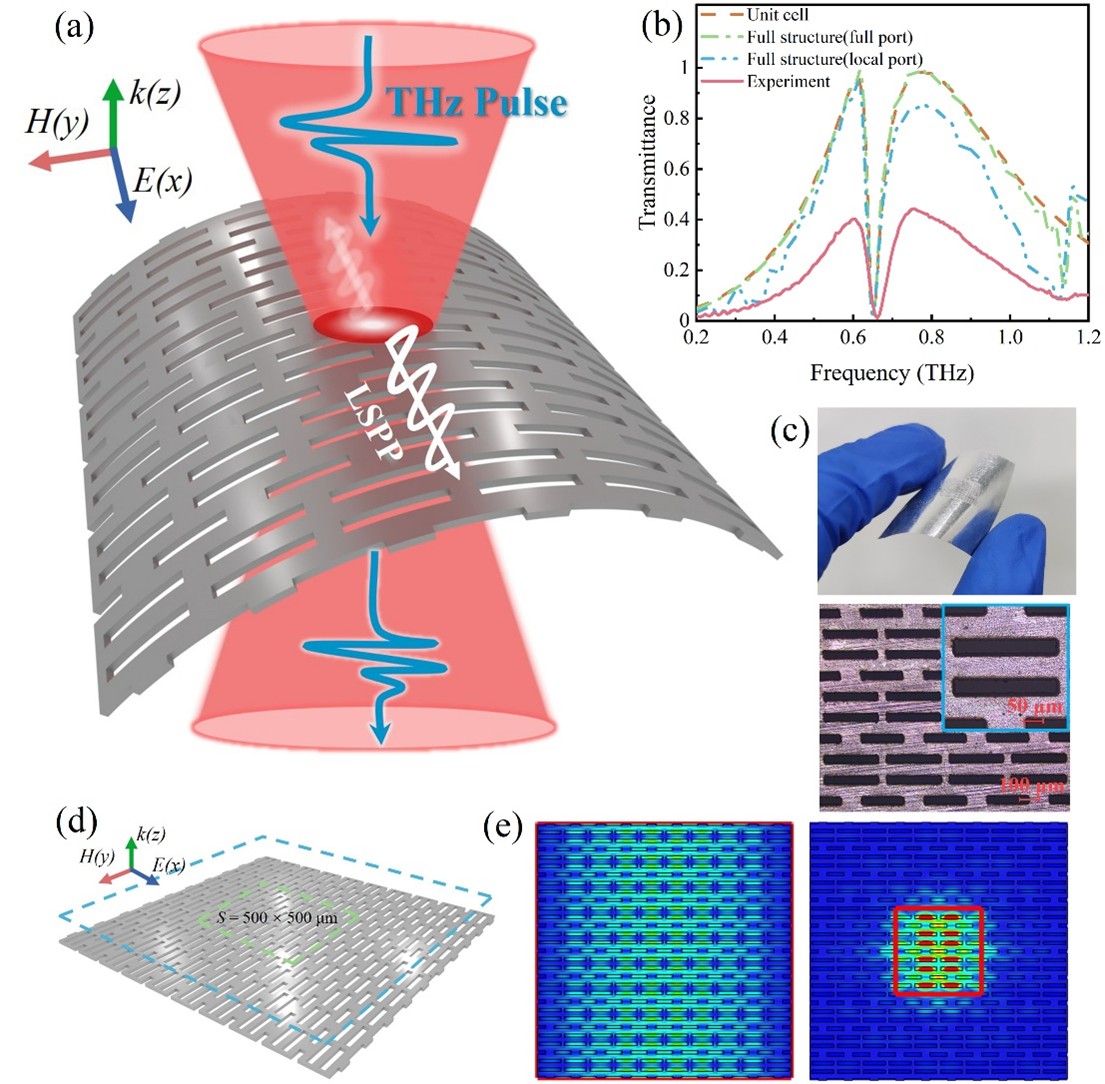
Figure1.Flexible THz devices based on MMs with independent structures. (a) Structure schematic of MA-MMs. (b) Calculated transmission spectra under different simulated conditions and experimental measurement results. (c) Physical image and micrograph. (d) Diagram of port settings with two different area sizes. (e) Simulated electric field distribution under different port settings.
通过模拟及实验测量不同弯曲状态下的透射响应,结果表明在弯曲情况下超材料保持频率稳定性,弯曲仅改变谐振激发范围而不改变谐振响应模式。即使在双透射峰因弯曲幅值降低87.6%时,拉比分裂峰的品质因子仅降低14.8%。
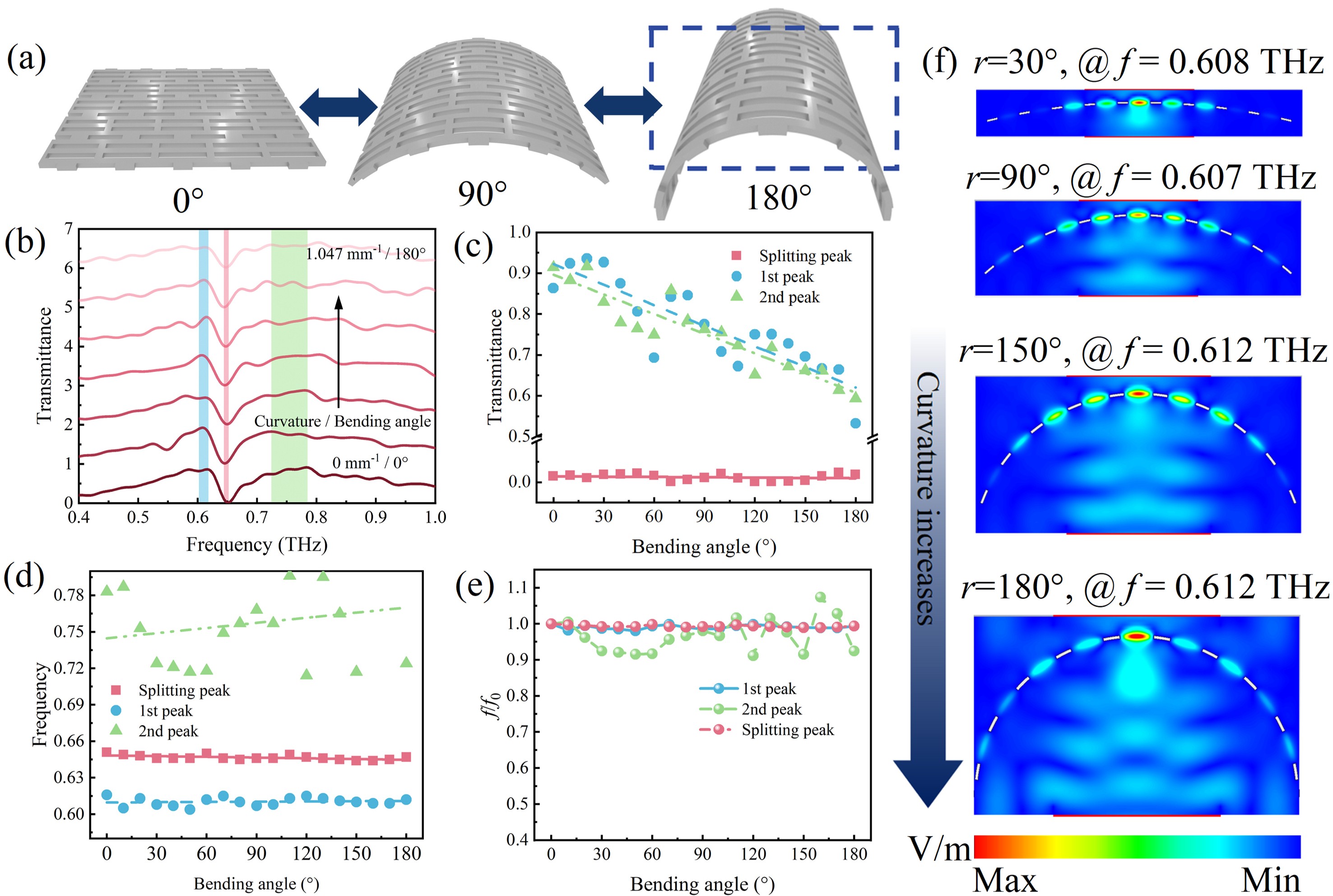
Figure2.Simulated transmission response performance at different bending angles. (a) Deformation process of MMs. (b) Detailed transmission curve from 0° to 180°. (c-d) The variations of three peaks in transmittance and frequency from 0° to 180°. (e) Comparison of frequency offset for three peaks. (f) Electric field distribution in cross section at different bending angles.
实验测量在不同曲面大小下不同尺寸大小的弯曲超材料响应结果,以此为可穿戴式设备或大型检测器械等多场景太赫兹器件应用提供依据。
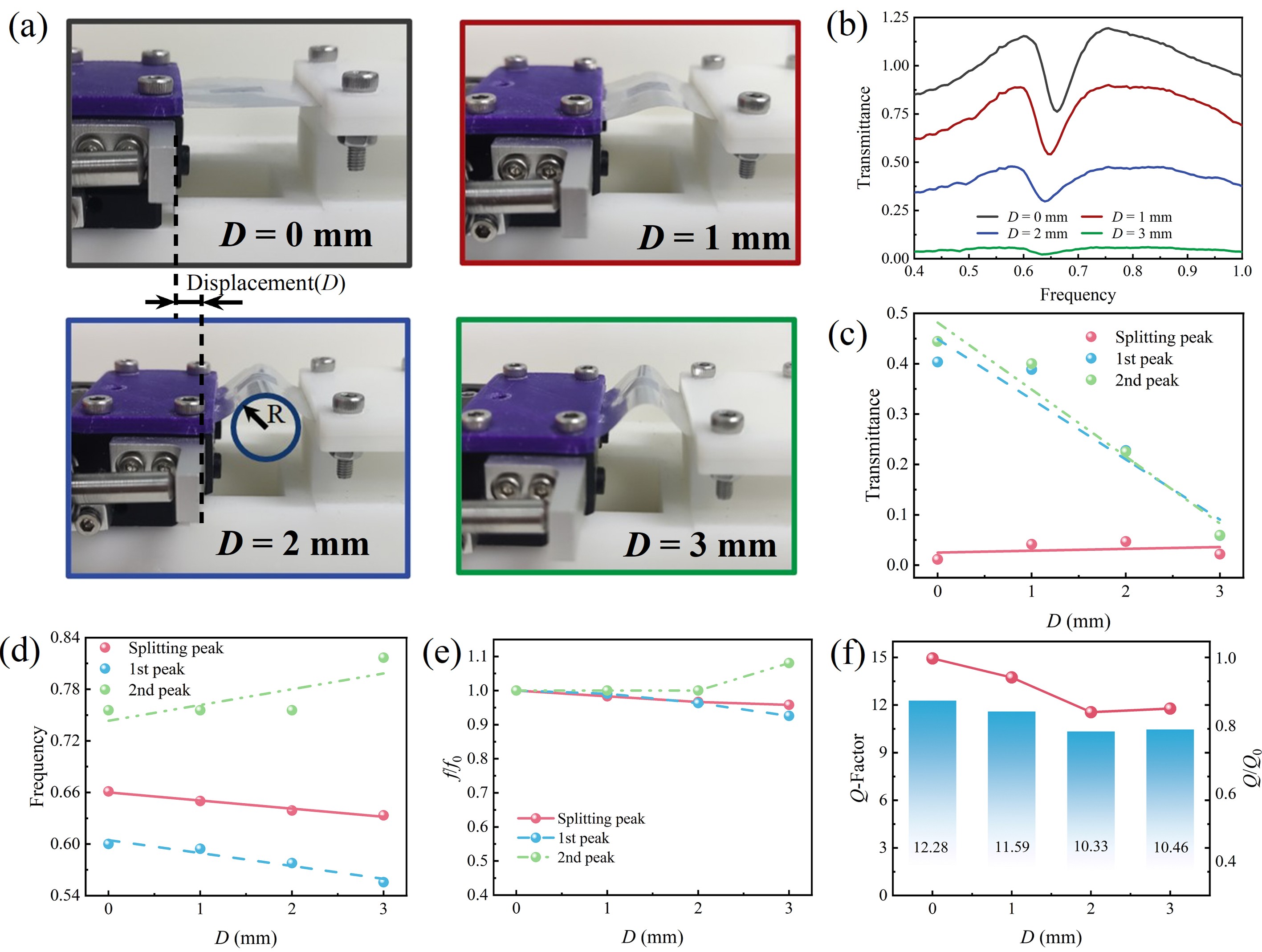
Figure3.Experimental measurements of MA-MMs at different bending conditions. (a) Experimental photo of MMs compressed from flat toD=3 mm by flexible fixture. (b) Experimental transmission spectra at different bending conditions corresponding to (a). (c-e) The variations of three peaks in amplitude, frequency and frequency offset. (f) Comparison ofQ-factor calculated from measurements under four bending angles.
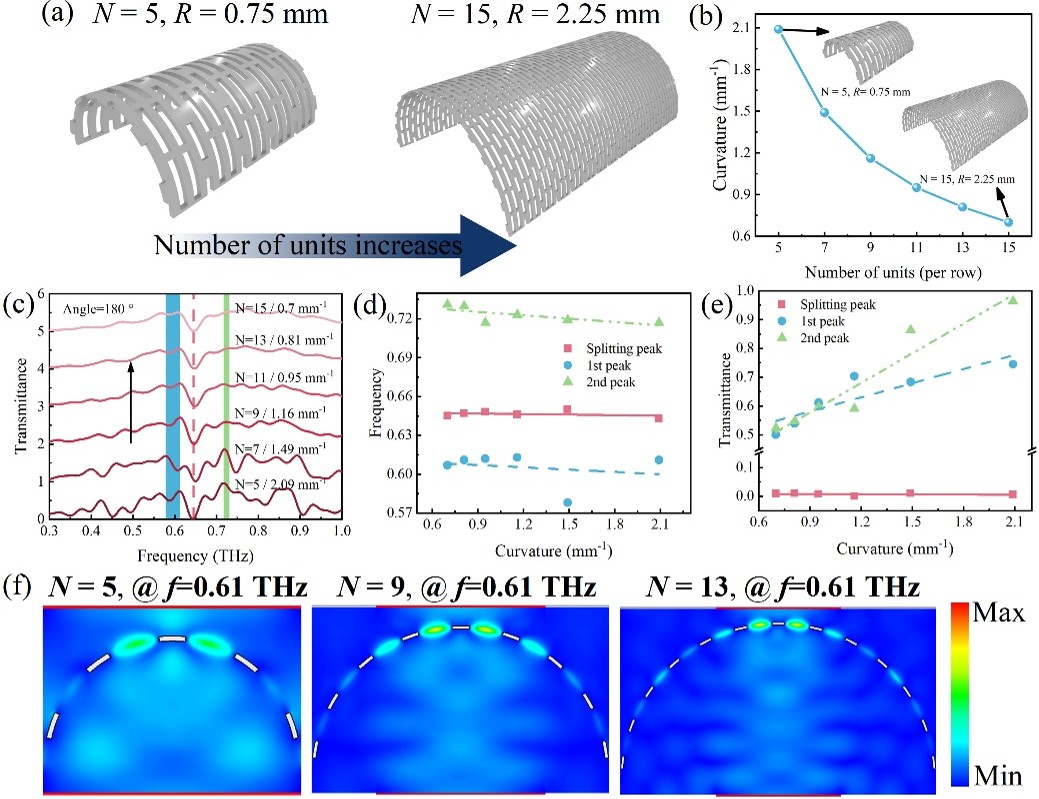
Figure 4.Simulated transmission response performance of MMs at different bending angles. (a) MMs schematic with different array sizes. (b) Inversely proportional between number of elements and curvature. (c) Detailed transmission curve with the number of units increased from 5 to 10. (d-e) The variations of three peaks in frequency and transmittance from 0° to 180°. (f) Electric field distribution of different arrays in cross section.
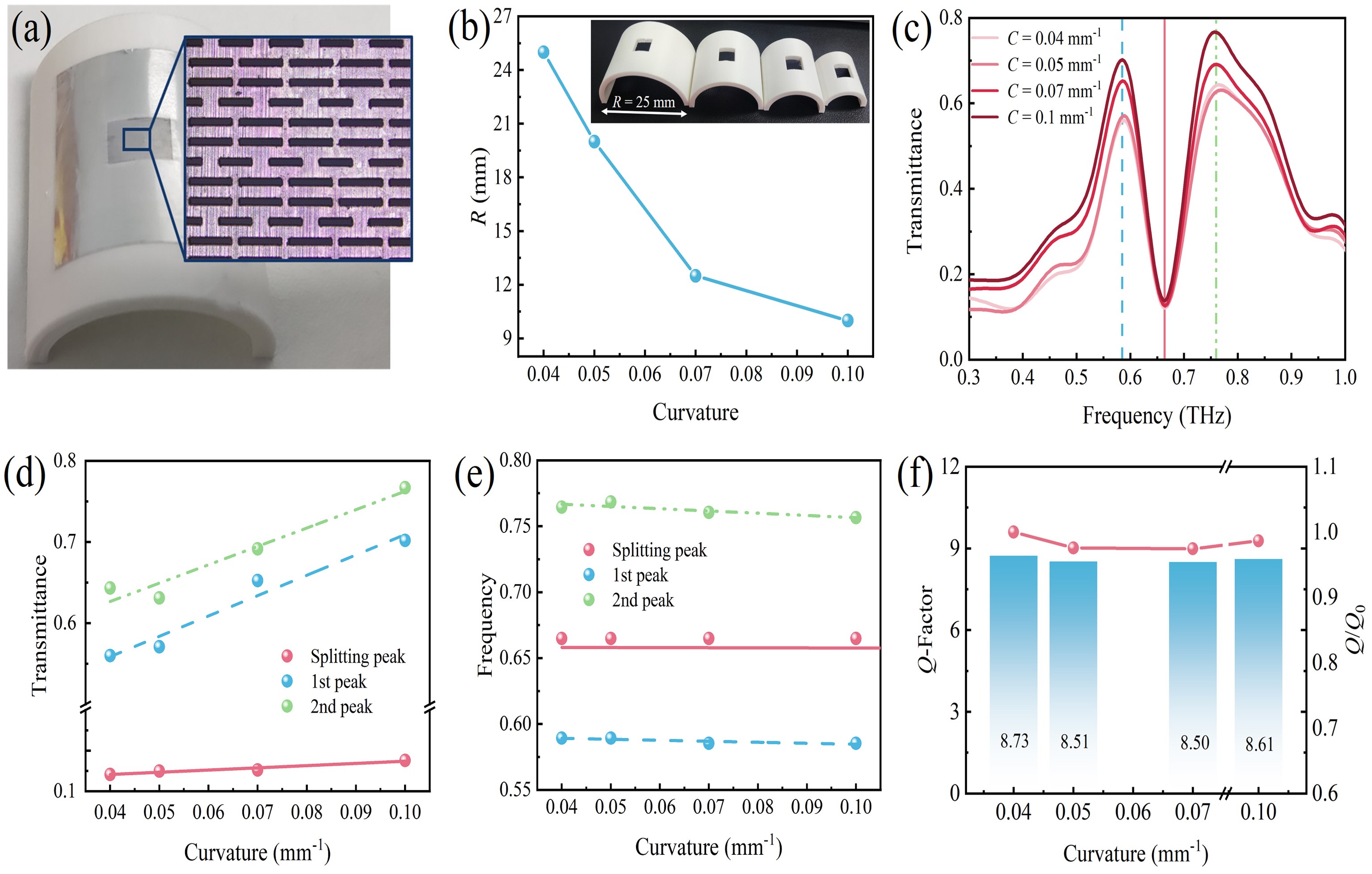
Figure 5.Experimental measurements of bending models with different sizes. (a) A bending model with a bending angle of 180°. (b) Inversely proportional between curvature and radius. (c) Measured transmission curves of MMs with four bending models. (d-e) The variations of three peaks in transmittance and frequency. (f) Comparison ofQ-factor calculated from measurements under four bending models.
三、总结
本研究基于表面等离子体模式间强耦合效应设计一种独立式金属孔径超材料,通过双模式协同调控实现弯曲形变下的电磁响应稳定性。采用全波时域求解器构建结构模型,创新性地引入局域化端口激励方式,精确表征不同曲率状态下透射谱演变规律。机理分析表明,弯曲变形主要通过改变表面等离子激元的空间激发范围,而非调控本征共振模式,因此谐振频率保持稳定。
实验验证发现,强耦合作用产生的拉比分裂在弯曲过程中保持良好稳定性,其Q因子仅下降14.8%。本工作提出的强耦合调控策略为开发具有形变自适应能力的柔性太赫兹器件提供了新范式,在可穿戴传感和曲面共形器件领域展现出重要应用前景。
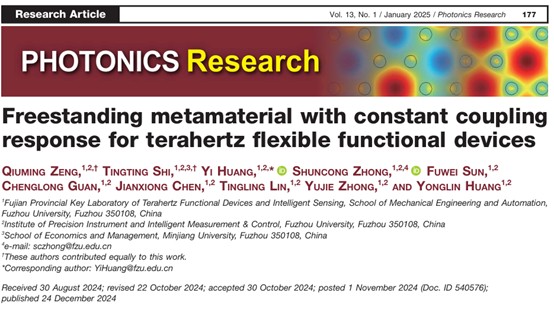
原文链接:https://doi.org/10.1364/PRJ.540576